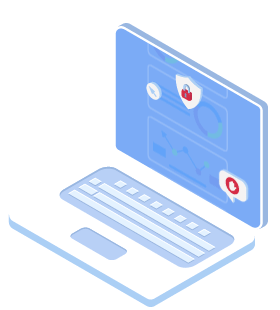How to Protect Yourself from Click Fraud on Click-to-Call Ads
When it comes to the different and many types of click fraud, it seems that fraudsters will stop at nothing to get their way, sabotaging your advertising efforts and hurting your marketing budget. From different types of bots and web crawlers to click farms and competitors, in a more than $335 billion-worth digital marketing industry, the stakes couldn’t be higher.
This is one of the reasons click fraudsters are willing to try just about anything from Google Ads to PPC campaigns, all in order to make a quick buck at your expense. Click-to-call ads are no exception. Read on to find out everything you need to know about how click fraud affects click-to-calls and what you can do to protect your business.
What Is a Click-to-Call?
A click-to-call, often referred to as a click-to-talk, a click-to-text or a click-to-dial is a form of direct response marketing, a digital communication system that enables people to get in touch with a company representative by clicking a button or text that connects them in real-time through phone or text while they’re browning a website or app. The click-to-call is intended to save people surfing the web precious time so that they won’t have to manually enter a business phone number to place a call.

It is so useful that American market research company, Forrester Research, witnessed an average ROI (return-on-investment) increase of 143% after implementing the technology with $2.5 million in extra revenue over 3 years. Furthermore, because it doesn’t require users to download any type of software, there is no real concern that it will download any type of malware or spyware into their phone. With that being said, it doesn’t safeguard your business against click fraud.
There are two main types of click-to-call ads:
Call-Only Ads
Call-only ads are ads designed to encourage people to call your business. They can appear only on a device that can make a phone call. Once clicked by a potential customer, your ad places a call to your business from the user’s device. A call ad works like this: once you’ve won a bid to show your ad on the Google Search Network, it will be available for potential users to click on. Once they click on your ad their phone dialer will open showing the set number which is either your business’ number or a GFN. They will then be able to complete the call by tapping on their phone’s call button and reaching you directly in real-time.
These ads prevent users from having to be transferred to a landing page or manually dialing your number but they also happen to be fertile ground for click fraud.
Call Extensions
Unlike call-only ads in which only the business’ phone number is presented before a user, a call extension enables you to add phone numbers to your ads, increasing your click-through rates and reducing cost-per-lead by 40%. When your call extensions show, customers can tap or click a specific button to reach you directly, meaning you’ll get more engagement from your ads, helping you to track your conversions.
This is how call extensions work: now that your ad is presentable on the web, potential consumers will be able to see it through their phone or when browsing your website. They’ll be presented with a clickable call button that will enable them not only to reach you via phone but to access your website. You have the option to set your ad so that the numbers will only show during particular work hours or when it is most convenient for you to accept the call. You should note that Google regards each call made by a user as a click and will charge you the same amount per call as it does per click. You’ll be able to count your calls as conversions by turning on the call reporting setting in your account. However, you should know that this data isn’t enough to help you prevent click-to-call fraud.
The Problem With the Types of Click-to-Call Ads
Even though click-to-calls have quite a few benefits you can’t afford to ignore, including them having a positive impact on your business’ performance and account management, it doesn’t mean they don’t come without their share of problems. The main issue regarding these types of click-to-call ads is that since they have to lead to a specific business number without having to go through the business’s website, they don’t go through any tracking template or website script. This means you can’t block their IP address or compare a click versus a call and with Google charging per click, this could mean a hefty price to pay as well as a great opportunity for click fraudsters looking to harm your business.
The Solution
With stats showing that click-to-calls convert 10 to 15 times more than web leads, influencing more than $1 trillion in U.S. consumer spending, there is no doubt that putting your money into click-to-call ads is essential for your business. In fact, they are so popular that in 2019 potential consumers made roughly 162 billion click driven-calls to businesses. But with no tracking for the source of your calls, you could not only be engaging with click fraud but you could be missing 80% of your conversions. Analyzing each click and tracking your calls by working with the best click fraud software is crucial when it comes to preserving your marketing budget, protecting yourself from fraud and engaging with your target audience.
Clixtell offers a unique and exclusive service in the market that will save you money as well as provide the click fraud protection you’ve been looking for. We track, measure and record click-to-call ads by using a tracking phone number you can choose from our local and toll-free numbers. Our data enables you to compare the number of clicks on your ad and the number of incoming calls you received, helping you gain valuable insight as well as report click fraud to Google and get refunds.
Our one-of-a-kind software assigns tracking numbers to your ads that are suited to every type of business, including the following features: call recording, caller ID, whispers, and caller history.
So, what are you waiting for? Let’s get started tracking, measuring and recording your ads to guarantee your budget and business remain safe.


